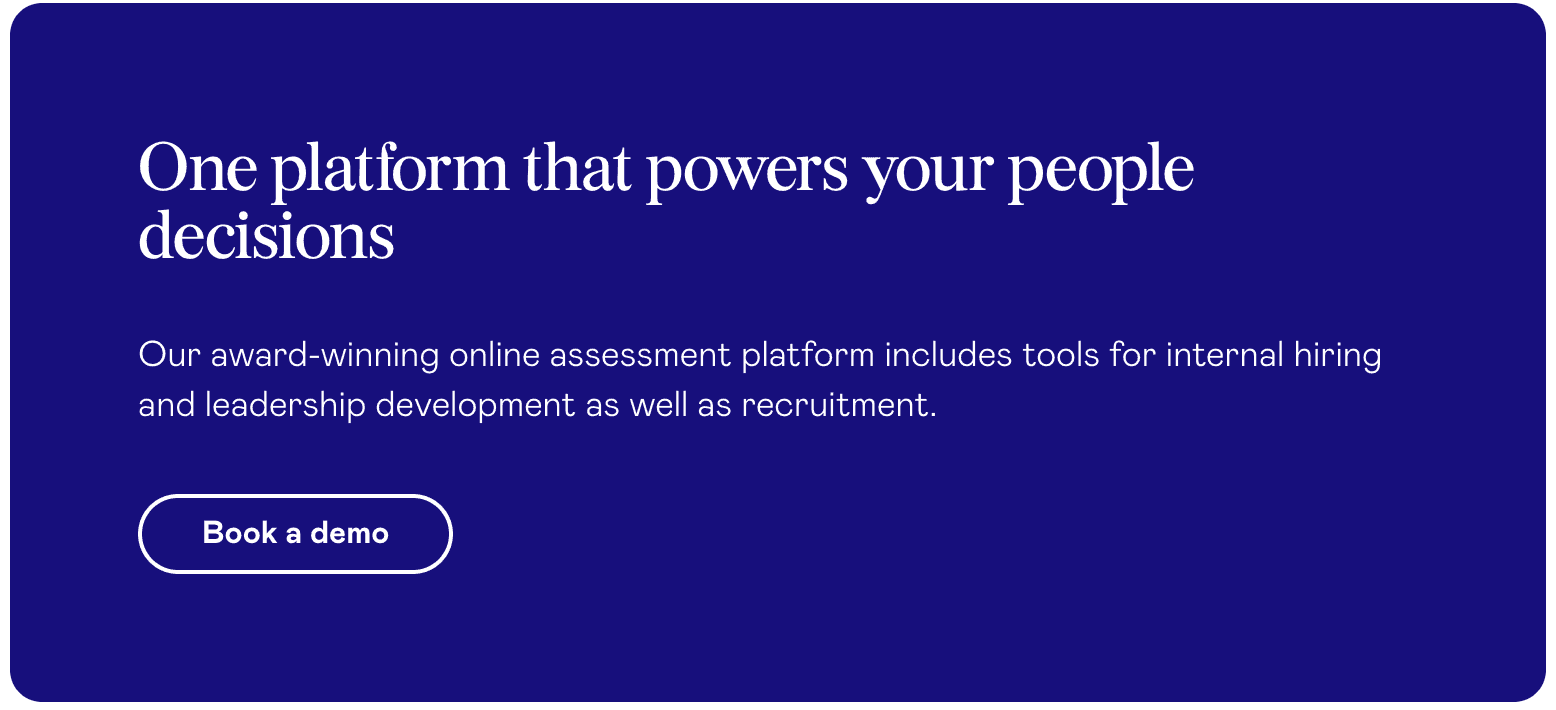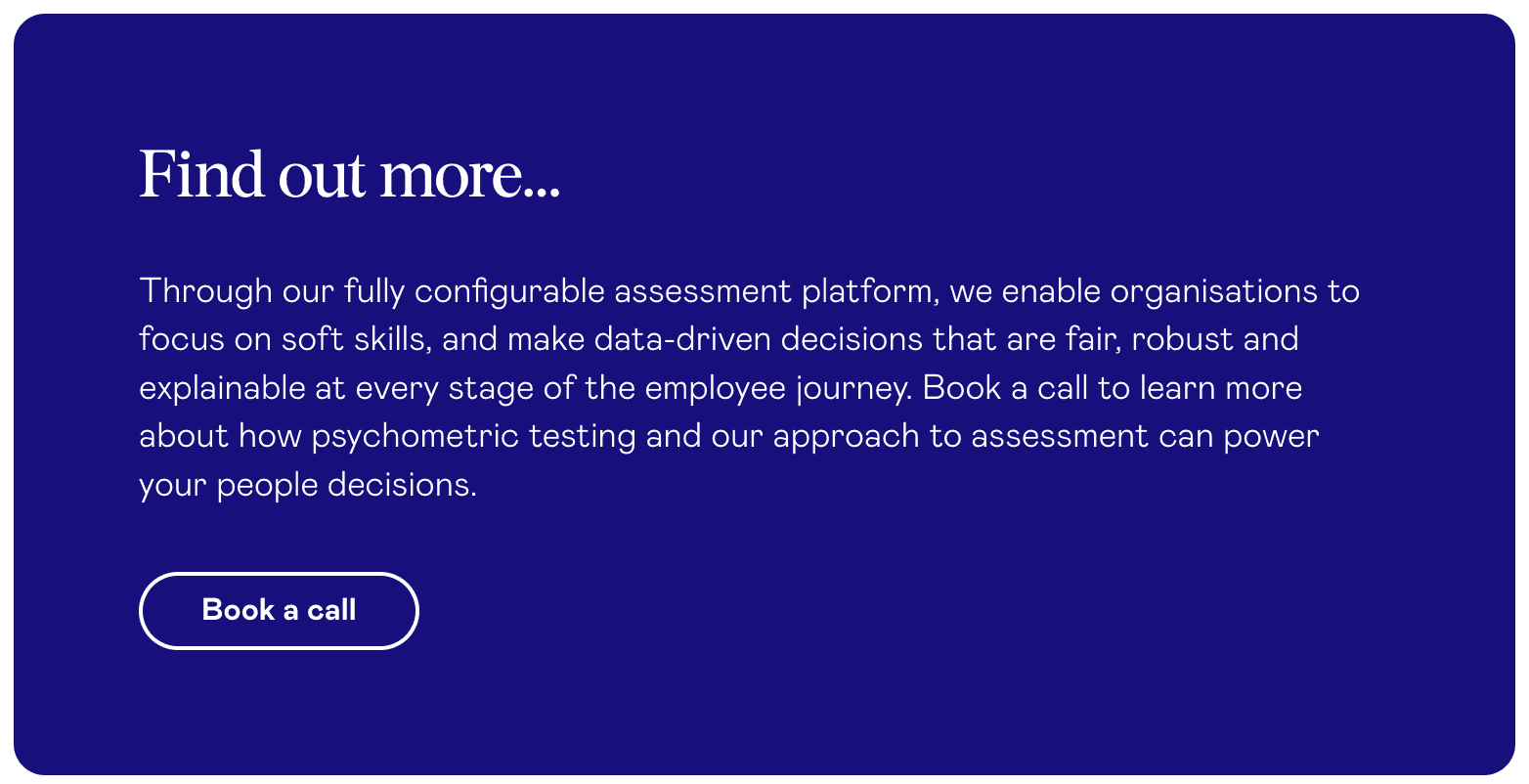Take a sneak peek of the product with an interactive tour | View now
How do you identify and develop internal talent?

At one time, organisations went to the external market first in their quest for top talent. But as a result of the ongoing war for talent, and a realisation of the benefits, more and more businesses are shifting to consider internal talent development first.
By focusing on internal talent developing strategies, before casting the net wider for their next team members, recruiters and hiring managers are benefiting from cost savings, efficiencies, and better employee engagement.
Why focus on internal talent development?
Research published in Harvard Business Review shows that external hires take longer to adapt to their role and have higher rates of voluntary and involuntary exit than internal hires. Developing organisational talent from within, means those employees are more able to hit the ground running and be productive more quickly.
Plus, hires from an internal talent pool tend to have higher success rates, due in part to their understanding of organisational culture. They are also more likely to be loyal and committed to the company for the long term which helps to build a sustainable talent pipeline and aids succession planning. Research shows that promoting internal talent boosts other employees’ engagement too.
External hires are also shown to be more costly, with one study finding external candidates to be 18% more expensivethan those developed internally. Organisations that invest in internal talent development can therefore make significant cost savings over time.
Talent development as part of the employee experience
Helping people to grow is a key part of the employee experience. If we are focused on about supporting employees in realising and reaching their potential, there will be benefits to creativity, innovation and culture.
Creating a culture of ‘mobility first’ can boost employee engagement. If employees know their organisation is willing to invest in their future through ongoing development, they’re more likely to stay for the long term.
In fact, thinking internal development-first is one of Forbes 15 ways to generate better results by developing internal talent, which highlights the benefits of internal talent management to retention:
“The sooner organisational leaders learn that an employee’s value is more important to the company as a whole than it is to the team on which they work, the better their retention rate will be”.
How to design a talent management strategy
How can you design an internal talent management strategy for your organisation? You’ll need the right tools for identifying talent and outputs that can then feed into development plans and career pathways.
Here is a step-by-step guide.
1. Talent identification
Firstly, consider what competencies and skills you’re looking for in future talent. Think ahead to your organization’s ambitions and bear in mind that 56% of skills are predicted to become obsolete in the next 15 years. Work with colleagues to plan an approach that is future-focused and that will create the talent pool you need in the long term.
2. Assessing talent for development
Assessing talent for internal development needs a different approach to assessment during recruitment. The assessment should be developmental for the candidate - think of creating a learning experience rather than screening candidates. Outputs from the assessment should provide personalised feedback that can be incorporated into development plans.
3. Think inclusively about your talent pool
At every stage – design, assessment and feedback, consider the talent pool you are creating, as this is what your organisation will be relying on to provide its future workforce. Given the refocus on new, emerging and divergent skills, its important to keep diversity top of mind. A data driven approach to assessment will enable you to maximise your talent processes for diversity.
4. Create development plans
After the assessment stage, think about how to develop talent based on the outputs from assessment. Everyone has the potential to become a top performer if they are given the right development opportunities. To formulate these opportunities and to direct learning, create targeted plans based on employees’ their strengths and weaknesses highlighted by the assessment.
5. Be data driven in your talent management
Data is the key to effective talent management. The ideal scenario is to have all your data in one place, accessible and in real time. Using a platform like Sova, learning & development teams can access all assessment data from recruitment onwards to feed into development plans. By having the data available enterprise-wide at any time, senior leaders can build a picture of capability and gaps which enables a long term view of organisational development needs.
6. How to assess talent for development at a senior level
Internal talent development programmes need not be restricted to early career and high potentials. Sova supports many clients with internal talent development and assessment for business leaders. In our work with Petrofac, we designed an assessment centre to identify candidates for the company’s global executive development programme.
The Sova solution offered a fair, accessible, and globally consistent approach to identifying talent. A more diverse candidate pool and a data driven approach to assessment are helping to prepare the next generation of Petrofac’s business leaders.
The future of talent management within organisations
Developing organisational talent from within is only going to become more critical. A scarcity of talent, paired with the benefits of promoting internal talent, strengthen the business case for thinking internal mobility-first.
New assessment tools and formats make it easier, more accessible and more cost-effective to run internal development progammes. And on top of that, internal talent offers a host of other benefits. Creating a culture where every employee can recognise and reach their potential is good for our businesses, good for our teams and good for society.
To find out more about how Sova supports talent management within organisations, take a look out our Internal talent and leadership development page.

